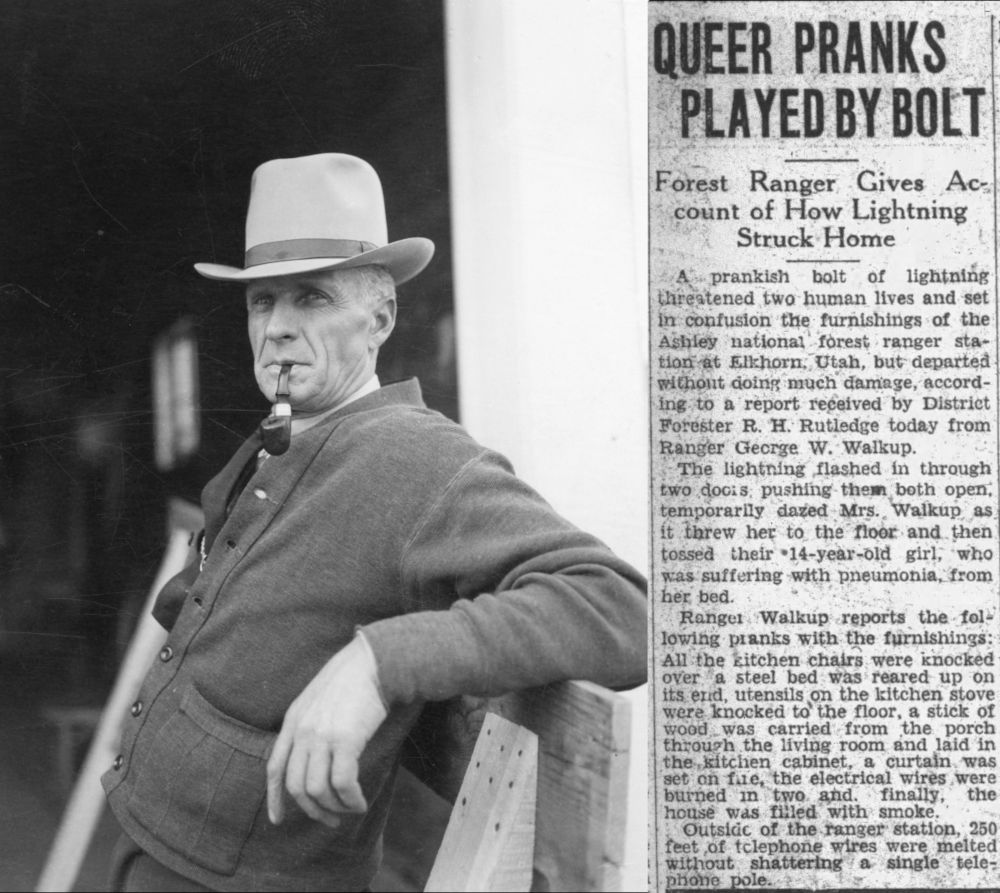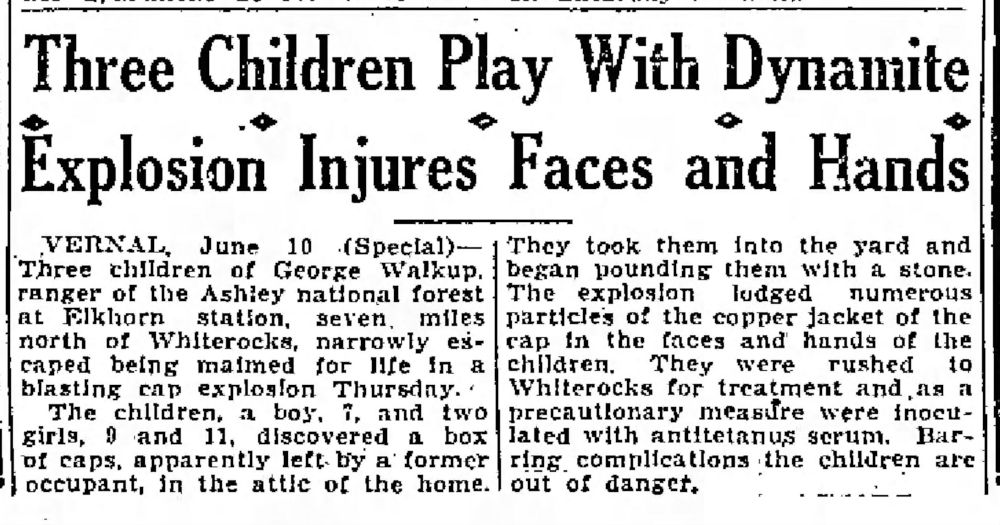Directions
Walk-up Lake WR-55 is located on the south slope of the Uinta Mountains in Duchesne County, Utah. The lake lies within the White Rocks River Drainage of the Uinta-Wasatch-Cache National Forest. For access you will park at Chepeta Lake and take an incredibly long and steep hike to the lake.
From Roosevelt take US 40 until your reach Eagle View Elementary School in Fort Duchesne. Turn east directly after the school onto White Rocks Highway which is also called 5750 East. The road eventually turns into Farm Creek Road. After about 20 miles on the road from highway 40 there will be a turn for FR117 also known as Elkhorn Loop. A lot of people will miss the turn but its easy to tell because the road will look like you’re entering private property if you miss the turn. You will follow FR117/Elkhorn loop about 14 Miles east until you hit a fork with a sign for Chepeta Lake/Pole Creek Lake. Turn right and follow the road another ten miles.
The Hike
From Chepeta Lake
The hike is generally marked between 3 and 3 1/2 miles. Much of this hike is straight up a mountain and over many loose rocks and boulders. Do not attempt if you’re not in great hiking shape. Follow the trail to Mocasin, Papoose and then to Wigwam Lake. After this point there is no trail. From here you want to head straight north even though the lake is north west. I made the mistake of going the most direct route which takes you close to Figure-Eight Lake. This will route is insanely steep. From Wigwam head north for 1/3 of a mile. then start heading north west. This should give you the easiest path however it will still be grueling.
From North Slope
It is possible to hike in from the Spirit Lake, Tamarak, Jensen Lake area. You can see more about this route from The Adventures of Lupe page blog below.
Fish Species
Brook trout are the only species of fish in the lake. Cutthroat were experimentally stocked in 1967. Now the lake is stocked only with brook trout on a 5 year cycle.
CT = Cutthroat Trout unknown strain. BKOW = Brook Trout OWHI strain. BK = Brook Trout unknown strain.
| Year | Species | Number stocked |
| 1967 | CT | 3,218 |
| 1977 | BK | 1,296 |
| 1982 | BK | 1,302 |
| 1987 | BKOW | 1,311 |
| 1992 | BKOW | 1,839 |
| 1997 | BKOW | 1,842 |
| 2002 | BKOW | 1,845 |
| 2008 | BKOW | 1,840 |
| 2012 | BKOW | 1,845 |
| 2017 | BK | 1,860 |
| 2022 | BK | 1,832 |
Walk-Up Lake Name Origin
When doing several hours of research into Walk-Up Lake I read many times that the lake was named after the long walk up the mountain. In the early 1900’s when many of these lakes were named Walk-Up was a very popular phrase. A walk-up apartment is defined as an apartment with no elevator where you need to walk up flights of stairs to access. Typically two to four floors. I came across this article which I thought fit the lake well.
Bargain Floors of Apartments Reflect Whims – Salt Lake Telegram 09/02/1928.
The first floor of modern apartment building are rent cheap, due to the fact that women will not live in them readily because of their inborn fear of thieves, when as a matter of fact, most robberies are committed from the inside rather from the outside according to experts who took part in a discussion on pricing apartments at a recent convention of the National Association of Real Estate Boards. On the other hand, the top floors of walkup apartments buildings are cheaper than the lower floors because the public is lazy these days. They will not pay for a view if they have to climb to get to it. But will pay excessively for it if they can be lifted to it by elevator, the same discussion brought out.
However, this lake was actually named after a forest ranger George W. Walkup. He served as a forest ranger for 35 years. He started his ranger career on May 1, 1919 in the Manila ranger district. In December 1st 1923, he was transferred to the Whiterocks ranger district where he worked until he retired in 1954.
In the early days rangers received very low pay and were required to furnish their own stock, equipment, and maintenance. They had to pay for their own travel expenses as well.
Life was tough for George Walkup. His kids were getting blown up by dynamite. His ranger station/house was built on a native American burial ground. Lightning was known to come into his house, carry items around, and stick them into cabinets.Then toss his daughter who was sick with pneumonia out of her bed and onto the ground. This may sound like a story that belongs more a few miles south at SkinWalker Ranch. George just rolled up his sleeves, took a puff from his tobacco pipe, punched adversity in the face and got to work.

In the early 1900’s, George ran cattle, worked as a bar tender, and ran some poker games in Dragon Utah. This was a frontier town known for outlaws, and I’m sure George quickly learned how to handle disorderly folks. This would serve him well as a ranger.
Fish Friends and Construction.
The first fish in the head of the Uinta River drainage was planted in Chain Lakes on June 18, 1924 and in Lake Atwood on June 19, 1924. This work was done by Melvin Roberts, then running sheep in Atwood basin. Mr. And Mrs Fred Sargent and Ranger Walkup report that they left the hatchery early on the 18th and in order to keep the fish from dying rode nearly non stop arriving at Lake Atwood some time after midnight on the 19th. These lakes proved to be excellent habitat for the fish and on July 5th 1925 Ranger Walkup caught trout 12 1/2 inches long from Lake Atwood.
In 1928, none of the lakes in the Whiterocks drainage had fish due to a water fall on the river blocking spawning. Ranger “Geo” Walkup planted the first lake in the drainage which was Queant lake. Sportsmen groups started to pop up around Utah. They would charge a small fee for each member. Then raise money through event like dances and banquets. They would then use this money to purchase fish to be planted in the Uintas. George was a member or director of multiple sportsmen clubs.
One of these groups Roosevelt Fish and Game Club was partially responsible for getting four new rearing ponds built at the Whiterocks hatchery. Many of the lakes in the area were fist stocked by George Walkup.
In the 1930’s George directed many of the construction projects by the CCC. He was heavily involved in scouting. He helped build a scout camp which the scouts voted to be called Camp Walkup. Camp Walkup was used for decades to follow by many groups. They would typically do a wiener roast or a softball game there. There was giant fire-pit which groups would gather around to meet and converse.

Vernal Express 2/11/1937
George was given a nickname by the Utes of Uinta Pitchit which translates to Tree Policeman. The newspaper asked if there was any pipe smoking or other ceremony between ranger walkup and the Utes in the bestowal of this title: If so it must have been a cinch for George as he can out pipe smoke any Indian.
In 1937, George was able to procure funding to build a ski hill near Farm Creek above the city of Whiterocks. It was named Walkup Ski Hill and was a popular destination for skiing and toboggan riding.
Roosevelt Standard 11/3/1938
Work on the road from the ranger station to the mountain area where the ski hills are located has been going forward and nearing completion. It has been widened , straightened and grade smoothed out so that it can be reached in high gear, ranger Walkup said. The three ski hills built by the forest department last year have been cleared of brush and rocks and will be smooth as glass when the first heavy snow falls.
George or Geo for short was credited with catching many brook trout over four pounds in the Uintas, and some as big as 7 pounds. He was friends with many of the Utes in the area. One time Geo was really sick and the Utes did a sundance and prayed for him. In the morning he woke up feeling better. One of his friends “Sowepina” or Uncle Sam as he was known by lived to be 114 years old according to the tribe. He had buried two of his nephews on the spot where the ranger station was built. He told George he would need to move the building but George said that couldn’t happen. George and his wife would often feed Sam and send back supplies to his family.
Historical DWR Info
2024
Walk-up Lake is a classic example of a glacially formed cirque lake. Located 2.7 miles northwest of Chepeta Lake, Walk-up Lake sits in a deep bowl with surrounding cliffs towering a thousand feet above the surface of the lake. The lake sits at 11,114 feet in elevation and is 18.4 surface acres with a maximum depth of 55 feet. To access the lake follow the trail from Chepeta Lake that takes you to Mocassin and Papoose lakes. From Papoose cut over to Wigwam Lake then hike up northwest through steep, rocky meadows to Walk-up Lake. A rocky cleft also leads due north to Walk-up Lake from Figure Eight Lake. Follow the base of the mountain around to the northwest to the lake. Expect this route to be steep initially before the hike gets a little easier. Despite the abundance of rocks in the area, a few decent campsites can be located in small, grassy swales. Horse feed is very scarce, but there is spring water away from the lake. The shoreline is open, but footing is extremely treacherous on large, unstable boulders. Fishing pressure is light for stocked brook trout.
1987
WALK-UP LAKE, WR-55. Walk-Up is a classic example of a glacially formed, cirque lake. Located 2.7 mile northwest of Chepeta Lake, Walk-Up sits in a deep bowl with surrounding cliffs towering a thousand feet above the surface of the lake. This striking lake can be reached by horseback from Papoose Lake through steep, rocky meadows. A rocky cleft also leads from Figure-Eight Lake due north to Walk-Up. Some steep climbing is involved, and you should be in half-decent shape before attempting it. Things get easier after the initial ascent. Follow the base of he mountain northwest to the lake. Walk-Up Lake is 18.4 acres. 11.114 feet in elevation, with a maximum depth of 55 feet. Despite the abundance of rocks in the area, a few decent campsites can be located in small. grassy openings above the lake. Horsefeed is very scarce. but there is spring water in the general area. The shoreline is open. but footing is extremely treacherous on large, unstable boulders. Be cautious. Fishing pressure is quite light for stocked brook trout.
1964
WALK-UP, W R-55. 13 acres, elevation 11,500 feet, maximum depth 60 feet, average depth 32 feet. From Chepeta, two miles northwest over difficult and rocky terrain. No trail. A high, deep, cold lake completely encompassed by slide rock. This lone lake lies at the very head of a small rock basin. No campsites or horse feed. Stocked experimentally with brook trout. One to watch!
Nearby Places to Fish
Figure Eight WR-56 – Not planted, possible cutthroat
Elbow Lake WR-58 – Brook trout
Wigwam Reservoir WR-54 – Brook trout possible cutthroat
Papoose Lake WR-52 – Brook trout
Moccasin Lake WR-53 – Brook trout and cutthroat
Chepeta Lake WR-64 – Brook trout and cutthroat
Whiterocks River – Brook trout and cutthroat
Sharlee WR-57 – Cutthroat and brook trout
Reader Creek –
Hell Hole WR-65 – Cutthroat and brook trout
Upper Reader WR-66 – Cutthroat and brook trout
Hidden Lake WR-63 – Cutthroat possible brook.
Angel Lake WR-19 – Grayling and Tiger Musky
Deadfall – Grayling
